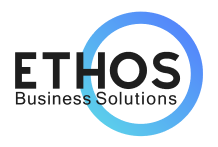As businesses grow, they encounter new challenges that were once unanticipated, and this often includes the need to reassess the software systems that support their operations. One of the most significant challenges growing companies face is that their Enterprise Resource Planning (ERP) system, initially tailored for a smaller operation, may no longer meet their expanding needs.
Without a proactive approach, companies can find themselves constrained by an ERP system that lacks the capabilities to support new complexities and scale efficiently.
For businesses using NetSuite, the good news is that this platform is designed to grow with you. However, unlocking its full potential during a period of growth requires strategic planning, a reevaluation of initial goals, and a clear roadmap for future development. In this post, we’ll explore how businesses can effectively scale their NetSuite ERP to align with their evolving needs.
ERP Growing Pains
Many businesses implement NetSuite in the early stages of growth when processes are simpler, and the number of users, transactions, and data volumes are lower. Over time, as these companies expand, they often find that their ERP needs have evolved beyond what was originally configured.
Common issues include slowed performance, a lack of automation in complex workflows, and an over-reliance on manual processes that can lead to errors and inefficiencies.
As these growing pains become more apparent, it’s clear that the NetSuite instance must evolve to support not just the current business requirements but also future growth.
Addressing the Challenge
To successfully address these ERP growing pains, it’s essential to establish a timeline that aligns with your strategic goals. The recommended approach includes three phases: Assessment, Improvement, and Scaling.
-
- Assessment Phase
During this phase, reevaluate your original goals from when you first implemented NetSuite and determine how well your instance is currently supporting your organization.
Consider these questions:
• What were the primary objectives when implementing NetSuite?
• Which aspects of your business have changed the most since then?
• Are there any processes or modules that are underutilized or no longer serving their intended purpose?
• Is your organization prepared to handle increased transaction volumes, more users, and additional subsidiaries or business units without compromising on performance or data quality.
• Is your NetSuite support provider aligned with your business’s growth needs?
This assessment phase is essential for understanding the gap between your current NetSuite configuration and the functionality your growing business now requires. It also lays the groundwork for the improvements that need to be made, ensuring they align with your company’s evolving priorities.
- Assessment Phase
-
- Improvement Phase
With a clearer understanding of your NetSuite environment, the next step is to make targeted improvements. This phase focuses on identifying specific areas where your NetSuite instance can be enhanced.
Key areas for improvement often include:
• Customizing Workflows and Automations: Implement automation for repetitive tasks to improve accuracy and save time.
• Improving Data Quality: Standardize data entry processes and clean up historical data to enhance reporting accuracy.
• Enhancing Reporting Capabilities: Set up customized reports and dashboards to provide real-time insights into key performance indicators.
• Increasing System Integrations: Evaluate your current integrations to ensure that your NetSuite instance communicates seamlessly with other business systems, such as CRMs, 3PLs, or e-commerce platforms.
These improvements can often be implemented gradually over anywhere from a few days to several weeks, depending on the scope of work. During this phase, make sure to include training sessions for team members to maximize adoption and understanding of any new processes.
- Improvement Phase
-
- Scaling Phase
Once the improvements are in place, it’s time to prepare NetSuite to support future growth. This phase includes building a roadmap for scaling your NetSuite instance in alignment with your long-term business goals.
Key considerations in this phase are:
• Expanding Multi-Subsidiary Management: : As businesses expand geographically, they often need support for multi-subsidiary and multi-currency transactions, which NetSuite is well-equipped to handle.
• Implementing Advanced Modules: Modules like Advanced Revenue Management, Advanced Manufacturing, CPQ, and WMS can be leveraged to support new operational needs.
• Leveraging Analytics for Strategic Decisions: Seamlessly connect NetSuite’s extensive data with external Bl tools to enable in-depth analysis and drive strategic decision-making insights.
• Monitoring Performance and Adjusting Capacity: Keep an eye on system performance as user numbers and data volumes grow, ensuring that your instance remains optimized.
This phase prepares your organization for future growth.
- Scaling Phase
Case Study:
A medical technology company specializing in bioelectronic therapies for chronic disease was facing significant operational and system-related challenges that hindered their ability to scale efficiently.
As a company focused on developing innovative medical devices, their operations spanned multiple systems, including Salesforce (SFDC), NetSuite, and Brightree. However, the integration and management of these systems had become increasingly difficult, leading to several key issues:
Following our 3 phased approach we were able to:
-
- Clearly Defining Business Requirements: We collaborated with the company to document detailed business requirements, ensuring all stakeholders understood the expected outputs and success criteria. This alignment prevented scope creep and kept the project focused on key objectives.
- Clearly Defining Business Requirements: We collaborated with the company to document detailed business requirements, ensuring all stakeholders understood the expected outputs and success criteria. This alignment prevented scope creep and kept the project focused on key objectives.
-
- Future State Architecture: A new system architecture was designed to significantly reduce data duplication across platforms. The guiding principle was that if a process wasn’t managed within a specific system, the data didn’t need to be stored there. This streamlined data flow across Salesforce, NetSuite, and Brightree, eliminating redundancy.
- Future State Architecture: A new system architecture was designed to significantly reduce data duplication across platforms. The guiding principle was that if a process wasn’t managed within a specific system, the data didn’t need to be stored there. This streamlined data flow across Salesforce, NetSuite, and Brightree, eliminating redundancy.
-
- SOPs for Month-End Processes: Standard operating procedures (SOPs) were created for the month-end closing process. These SOPs led to a 50% reduction in the time required to close the books by standardizing workflows and minimizing errors, improving the efficiency of the finance team.
- SOPs for Month-End Processes: Standard operating procedures (SOPs) were created for the month-end closing process. These SOPs led to a 50% reduction in the time required to close the books by standardizing workflows and minimizing errors, improving the efficiency of the finance team.
-
- Root-Cause Fixes for Manual Interventions: Enhancements were made to address the root causes of manual intervention. Automation was introduced where possible, reducing the need for manual adjustments and significantly cutting down on errors.
- Root-Cause Fixes for Manual Interventions: Enhancements were made to address the root causes of manual intervention. Automation was introduced where possible, reducing the need for manual adjustments and significantly cutting down on errors.
-
- Regressive Documentation: Comprehensive, regressive documentation was developed for all existing technical solutions. This documentation enabled the company’s internal team to better manage and support their NetSuite environment, reducing reliance on external consultants.
- Regressive Documentation: Comprehensive, regressive documentation was developed for all existing technical solutions. This documentation enabled the company’s internal team to better manage and support their NetSuite environment, reducing reliance on external consultants.
-
- Tech Stack Analysis: A detailed analysis of the company’s NetSuite tech stack was conducted to identify inefficiencies and underutilized features. This helped the company better understand their current tools and make informed decisions about future module investments.
- Tech Stack Analysis: A detailed analysis of the company’s NetSuite tech stack was conducted to identify inefficiencies and underutilized features. This helped the company better understand their current tools and make informed decisions about future module investments.
This process resulted in several key improvements:
-
- 50% Decrease in Month-End Closure Duration: The time required to close the month-end process was reduced by half, from three weeks to approximately 1.5 weeks, allowing the finance team to focus on more strategic tasks.
- 50% Decrease in Month-End Closure Duration: The time required to close the month-end process was reduced by half, from three weeks to approximately 1.5 weeks, allowing the finance team to focus on more strategic tasks.
-
- Reduction in Integration Errors: By addressing the root causes of integration discrepancies, the company saw a reduction in reconciliation errors, leading to lower internal and external reconciliation costs.
- Reduction in Integration Errors: By addressing the root causes of integration discrepancies, the company saw a reduction in reconciliation errors, leading to lower internal and external reconciliation costs.
-
- Increased End-User Trust: With more efficient processes and stabilized system performance, end-users developed renewed trust in the systems, leading to higher adoption and more effective use of NetSuite and other platforms.
- Increased End-User Trust: With more efficient processes and stabilized system performance, end-users developed renewed trust in the systems, leading to higher adoption and more effective use of NetSuite and other platforms.
-
- Shift to Process Optimization: With the system stabilized, the company was able to transition from reactive troubleshooting to focusing on optimizing their processes and systems for future growth.
- Shift to Process Optimization: With the system stabilized, the company was able to transition from reactive troubleshooting to focusing on optimizing their processes and systems for future growth.
-
- Increased Confidence in Contract Renewal: With a clearer understanding of their NetSuite environment and improved ROI from existing modules, the company felt more confident in renewing their NetSuite contract and acquiring additional modules with measurable value.
- Increased Confidence in Contract Renewal: With a clearer understanding of their NetSuite environment and improved ROI from existing modules, the company felt more confident in renewing their NetSuite contract and acquiring additional modules with measurable value.
-
- Roadmap Development: Developed a comprehensive roadmap outlining strategic, long-term improvements to ensure scalable growth and continuous optimization of business processes.
- Roadmap Development: Developed a comprehensive roadmap outlining strategic, long-term improvements to ensure scalable growth and continuous optimization of business processes.
Conclusion
As your business grows, it’s essential to ensure your ERP system scales with you. NetSuite’s robust, flexible, and scalable platform is designed to meet the needs of growing businesses, but without the right strategy, it can fall short of its full potential. At Ethos Business Solutions, we specialize in helping businesses like yours maximize their NetSuite investment and create a roadmap for future success.
Ready to scale your NetSuite instance to support your growth?
Contact us today to learn how we can help you align NetSuite with your business goals.


